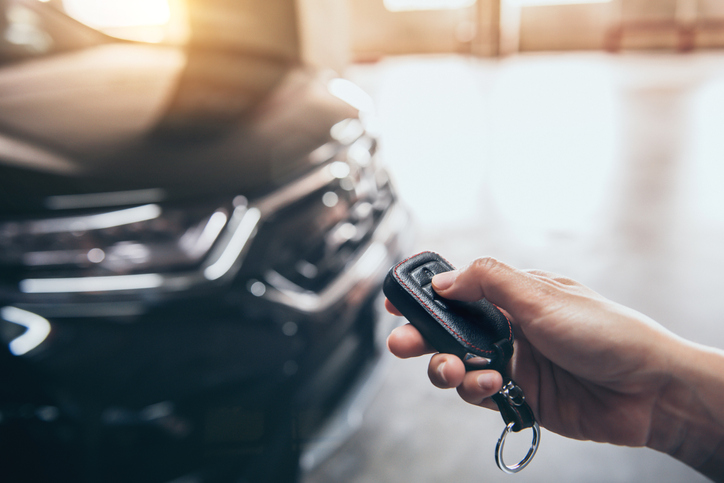Here at Nexus, we’re celebrating 20 years in business, so we thought we’d take a look back at how vehicle technology has developed over those years. Most technology evolves over time, so we’re looking at when it was adopted by the masses! What car tech is your favourite?
2000 – GPS Sat Nav
The first ever GPS system for automotive use was introduced by Mazda in 1990 and was built-in to the actual car. However, because the government limited the GPS functionality deliberately, it wasn’t until 2000 that the full capabilities were available to all commercial vehicles. By this point standalone GPS was available from the likes of Garmin as well.
2002 – Rear View Backup Camera
First introduced in Buick’s Centurion concept car in 1956, the rear-view backup camera didn’t make it into mainstream commercial cars until 2000. Toyota used a rear-view in their 1991 Soarer Sports Coupe, but only to the Japanese Domestic Market (JDM). Nissan are credited with starting the global boom of rear-view cameras with the Infiniti Q45 sedan and the Primera.
2003 – Dual Clutch Transmission
A dual clutch transmission means that there are two clutches, instead of one, and no pedals, instead of one, like in a manual transmission vehicle. It means that you can shift gear in lightning-quick time and you don’t interrupt power-flow to the engine, giving you improved acceleration.
Invented just before the second world war by Adolphe Kegresse, dual clutch transmission was never implemented, only patented. It actually first saw use in race cars in the 1980s, with Porsche and Audi using the concept. At the November 1985 Semperit Rally Austria, Audi used it to shift gears without lifting of the throttle, allowing their driver to win the race a full 19 minutes ahead of the next entrant.
It only became viable for use in passenger vehicles in 2003, with Volkswagen being something of a pioneer in the technology. Today there are a number of different cars enabled with dual clutch transmissions.
2003 – Automatic Parking (Park Assist)
This technology uses parking sensors and cameras to scan for a space and then the onboard computer will help you park the car by steering itself while you operate the brake and acceleration pedals.
The first version was launched in the Prius hybrid, sold in Japan in 2003, and in 2006, it was seen outside Japan on the Lexus LS luxury sedan.
2003 – Collision Avoidance Systems
Collision avoidance systems can be traced back as early as the late 1950s, with manufacturers such as Cadillac using radar technology to detect objects in front of the car. However, it was expensive to manufacture and was ultimately scrapped. It wasn’t until 1996 that this system reappears at the North American International Auto Show, but it still takes almost 20 years for it to become mainstream.
Honda was an early adopter in 2003, with its Collision Mitigation Brake System (CMBS) on the Japan-market Inspire. Mercedes-Benz launched their “Pre-Safe” brake assist sensors on their S-Class model the same year.
Since these beginnings, collision avoidance systems have spanned a variety of different features, from lane departure warnings, blind spot warnings, pedestrian detection, and more.
2008 – Turbocharging
Widely used in aircraft engines, turbos were too big to fit under the bonnet of a car, but it wouldn’t be long before someone figured it out. The first passenger car to have a turbo was the Chevrolet Covair Monza in 1962, but race cars had been using them since the 50s.
By 2008, both GM and Ford have installed turbochargers into their least expensive cars to provide greater power to smaller engines with a boost in fuel economy.
2014 – Mandatory Tyre Pressure Monitoring (TMPS)
A tyre pressure monitoring system is an electronic system that monitors the air pressure inside pneumatic tyres. It communicates real-time information about the tyre pressure to the driver of the vehicle via a gauge, pictogram display or a warning light.
A tyre’s level of inflation can affect things like braking distance and stability of a vehicle, so it’s an essential feature. Extreme underinflation can lead to thermal and mechanical overload, culminating in the sudden destruction of the tyre.
As a system, it was first adopted in luxury cars in the 1980s, specifically the Porsche 959 in 1986, and was eventually adopted across other passenger vehicles including the Renault Scenic (1996) and Peugeot 607 (1999) and the Renault Laguna II in 2000.
The system was widely adopted, but in 2014 every new passenger vehicle was required to have a TPMS before being sold.
2014 – Wifi and 4G hotspots for connected cars
The first connected cars were seen on the road in the 1990s in the Cadillac DeVille, Seville and Eldorado, which connected drivers to a call centre in the event of a crash. As technology advanced, it would allow the call centres to see the car’s location.
After this worked successfully and consistently, many automakers followed suit with similar programs.
By 2014, Audi was the first to offer 4G Wi-fi hotspot access and GM was the first to deploy it on a mass scale.
2018 – Keyless ignition
Keyless ignition systems began appearing on cars in the late 90s, and they have appeared under a number of different names since. From keyless start, and push button start to intelligent key and smart key, it essentially means that you can start your car’s engine without needing the physical contact of a key.
The Mercedes-Benz S-Class is generally recognised as the first-mass produced car with keyless ignition in the late 90s, using a fob, but the technology of starting and locking and unlocking the car without using a key has developed over time.
Hyundai developed fingerprint technology to unlock and start cars in 2018 in the Santa Fe in China, with a view for it to be rolled out worldwide.





